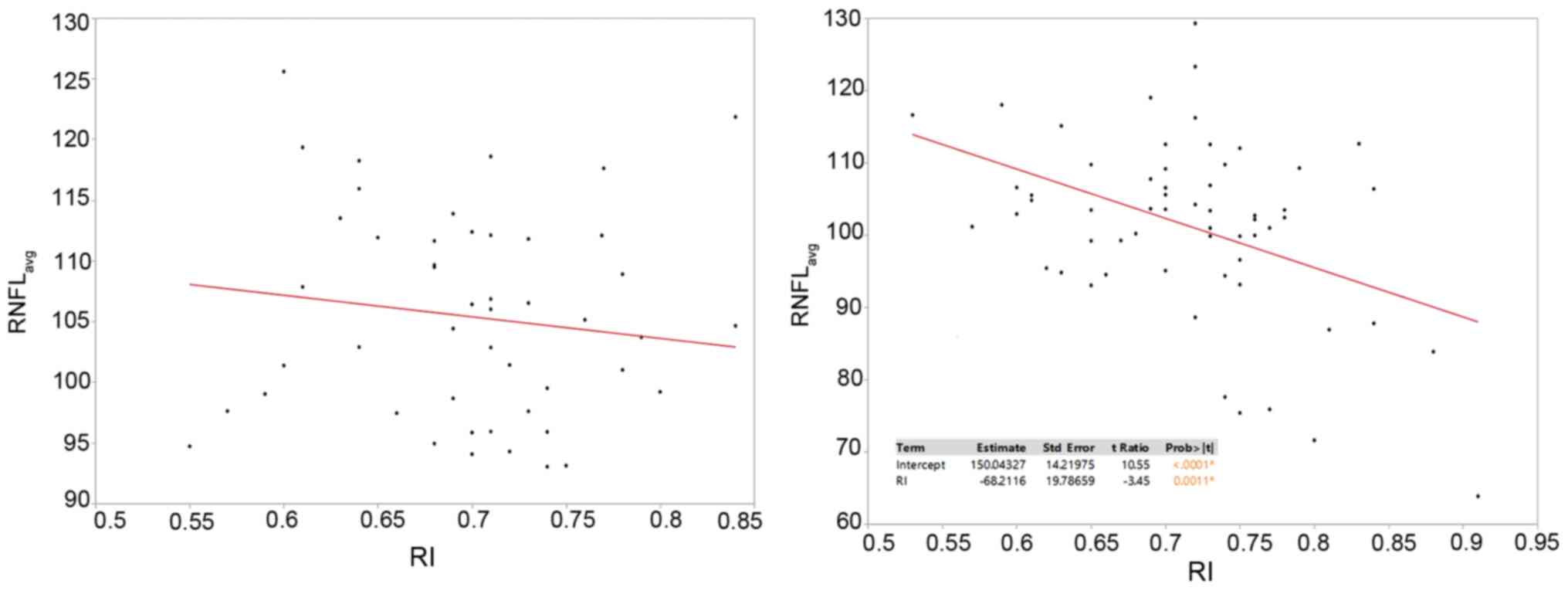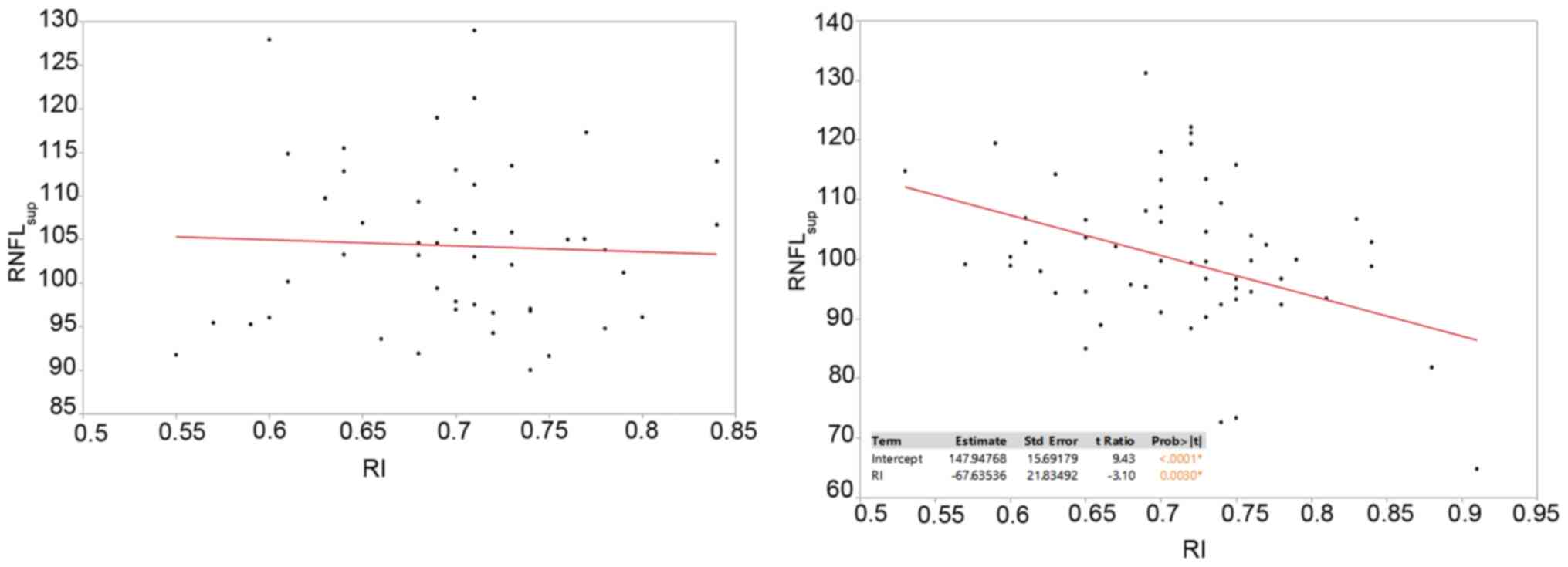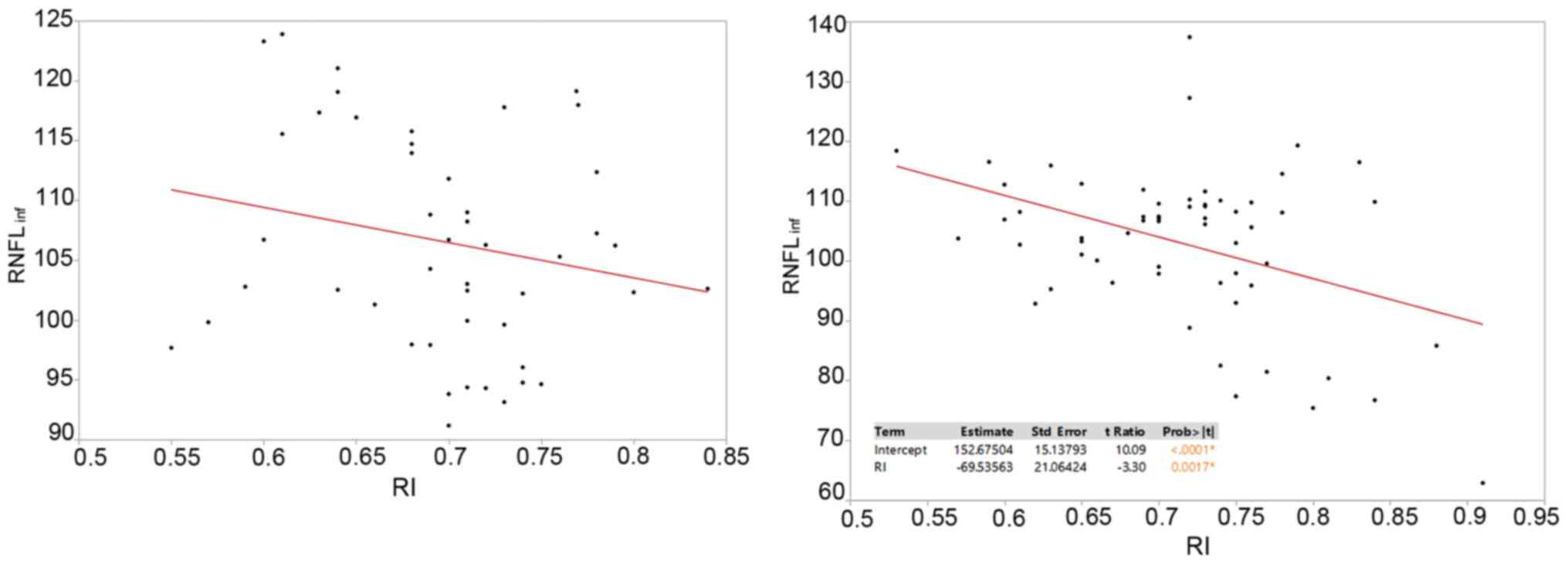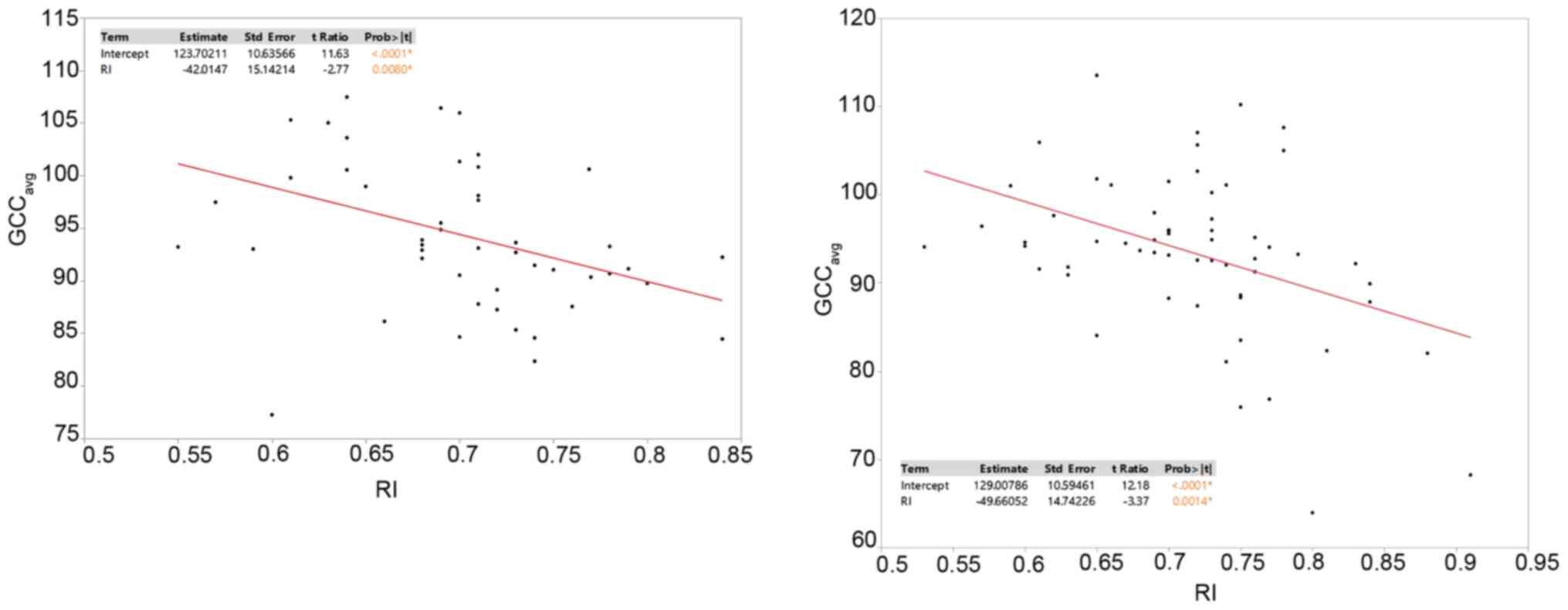|
1
|
Ryan CM and Bradley TD: Pathogenesis of
obstructive sleep apnea. J Appl Physiol (1985). 99:2440–2450.
2005.PubMed/NCBI View Article : Google Scholar
|
|
2
|
Mojon DS, Hess CW, Goldblum D, Böhnke M,
Körner F and Mathis J: Primary open-angle glaucoma is associated
with sleep apnea syndrome. Ophthalmologica. 214:115–118.
2000.PubMed/NCBI View Article : Google Scholar
|
|
3
|
Mojon DS, Hess CW, Goldblum D,
Fleischhauer J, Koerner F, Bassetti C and Mathis J: High prevalence
of glaucoma in patients with sleep apnea syndrome. Ophthalmology.
106:1009–1012. 1999.PubMed/NCBI View Article : Google Scholar
|
|
4
|
McNab AA: The eye and sleep apnea. Sleep
Med Rev. 11:269–276. 2007.PubMed/NCBI View Article : Google Scholar
|
|
5
|
Marcus DM, Costarides AP, Gokhale P,
Papastergiou G, Miller JJ, Johnson MH and Chaudhary BA: Sleep
disorders: A risk factor for normal tension glaucoma? J Glaucoma.
10:177–183. 2001.PubMed/NCBI View Article : Google Scholar
|
|
6
|
Weinreb RN and Khaw PT: Primary open-angle
glaucoma. Lancet. 363:1711–1720. 2004.PubMed/NCBI View Article : Google Scholar
|
|
7
|
Onen SH, Mouriaux F, Berramdane L,
Dascotte JC, Kulik JF and Rouland JF: High prevalence of
sleep-disordered breathing in patients with primary open-angle
glaucoma. Acta Ophthalmol Scand. 78:638–641. 2000.PubMed/NCBI View Article : Google Scholar
|
|
8
|
Klemm M and Gesser C: The relevance of
diabetes for patients with glaucoma. Klin Monbl Augenheilkd.
231:116–120. 2014.PubMed/NCBI View Article : Google Scholar : (In German).
|
|
9
|
Holló G, Cvenkel B, Teus MA, Irkec MT,
Astakhov YS, Chiselita D, Petkova N, Liehneová I, Kaluzny BJ, Kóthy
P, et al: Is there any difference in target intraocular pressure
for exfoliative glaucoma patients with cardiovascular disease
history? Eur J Ophthalmol. 20:1000–1006. 2010.PubMed/NCBI View Article : Google Scholar
|
|
10
|
Mojon DS, Hess CW, Goldblum D, Boehnke M,
Koerner F, Gugger M, Bassetti C and Mathis J: Normal-tension
glaucoma is associated with sleep apnea syndrome. Ophthalmologica.
216:180–184. 2002.PubMed/NCBI View Article : Google Scholar
|
|
11
|
Kremmer S, Selbach JM, Ayertey HD and
Steuhl KP: Normal tension glaucoma, sleep apnea syndrome and nasal
continuous positive airway pressure therapy-case report with a
review of literature. Klin Monbl Augenheilkd. 218:263–268.
2001.PubMed/NCBI View Article : Google Scholar : (In German).
|
|
12
|
Khandgave TP, Puthran N, Ingole AB and
Nicholson AD: The assessment of sleep apnoea as a risk factor in
glaucoma. J Clin Diagn Res. 7:1391–1393. 2013.PubMed/NCBI View Article : Google Scholar
|
|
13
|
Bendel RE, Kaplan J, Heckman M,
Fredrickson PA and Lin SC: Prevalence of glaucoma in patients with
obstructive sleep apnoea-a cross-sectional case-series. Eye (Lond).
22:1105–1109. 2008.PubMed/NCBI View Article : Google Scholar
|
|
14
|
Lin CC, Hu CC, Ho JD, Chiu HW and Lin HC:
Obstructive sleep apnea and increased risk of glaucoma: A
population-based matched-cohort study. Ophthalmology.
120:1559–1564. 2013.PubMed/NCBI View Article : Google Scholar
|
|
15
|
McNicholas WT: Diagnosis of obstructive
sleep apnoea in adults. Proc Am Thorac Soc. 5:154–160.
2008.PubMed/NCBI View Article : Google Scholar
|
|
16
|
Trivli A, Koliarakis I, Terzidou C,
Goulielmos GN, Siganos CS, Spandidos DA, Dalianis G and Detorakis
ET: Normal-tension glaucoma: Pathogenesis and genetics. Exp Ther
Med. 17:563–574. 2019.PubMed/NCBI View Article : Google Scholar
|
|
17
|
Swaminathan SS, Bhakta AS, Shi W, Feuer
WJ, Abreu AR, Chediak AD and Greenfield DS: Is obstructive sleep
apnea associated with progressive glaucomatous optic neuropathy? J
Glaucoma. 27:1–6. 2018.PubMed/NCBI View Article : Google Scholar
|
|
18
|
Pérez-Rico C, Gutiérrez-Díaz E,
Mencía-Gutiérrez E, Díaz-de-Atauri MJ and Blanco R: Obstructive
sleep apnea-hypopnea syndrome (OSAHS) and glaucomatous optic
neuropathy. Graefes Arch Clin Exp Ophthalmol. 252:1345–1357.
2014.PubMed/NCBI View Article : Google Scholar
|
|
19
|
Lin PW, Friedman M, Lin HC, Chang HW,
Pulver TM and Chin CH: Decreased retinal nerve fiber layer
thickness in patients with obstructive sleep apnea/hypopnea
syndrome. Graefes Arch Clin Exp Ophthalmol. 249:585–593.
2011.PubMed/NCBI View Article : Google Scholar
|
|
20
|
Huseyinoglu N, Ekinci M, Ozben S,
Buyukuysal C, Kale MY and Sanivar HS: Optic disc and retinal nerve
fiber layer parameters as indicators of neurodegenerative brain
changes in patients with obstructive sleep apnea syndrome. Sleep
Breath. 18:95–102. 2014.PubMed/NCBI View Article : Google Scholar
|
|
21
|
Aşker S, Timucin OB, Ursavas A, Aslanci
ME, Baykara M, Erturk H, Asker M, Yilmaz S and Kaya DT: Obstructive
sleep apnea syndrome and blood flow to the eyes. East J Med.
18:165–171. 2013.
|
|
22
|
Willekens K, Rocha R, Van Keer K,
Vandewalle E, Abegão Pinto L, Stalmans I and Marques-Neves C:
Review on dynamic contour tonometry and ocular pulse amplitude.
Ophthalmic Res. 55:91–98. 2015.PubMed/NCBI View Article : Google Scholar
|
|
23
|
Arriola-Villalobos P, Benito-Pascual B,
Peraza-Nieves J, Perucho-González L, Sastre-Ibañez M, Dupré-Peláez
MG, Asorey-García A and Fernández-Sánchez-Alarcos JM: Corneal
topographic, anatomic, and biomechanical properties in severe
obstructive sleep apnea-hypopnea syndrome. Cornea. 39:88–91.
2020.PubMed/NCBI View Article : Google Scholar
|
|
24
|
Erdem CZ, Altin R, Erdem LO, Kargi S, Kart
L, Cinar F and Ayoglu F: Doppler measurement of blood flow
velocities in extraocular orbital vessels in patients with
obstructive sleep apnea syndrome. J Clin Ultrasound. 31:250–257.
2003.PubMed/NCBI View Article : Google Scholar
|
|
25
|
Martínez A and Sánchez M: Predictive value
of colour Doppler imaging in a prospective study of visual field
progression in primary open-angle glaucoma. Acta Ophthalmol Scand.
83:716–722. 2005.PubMed/NCBI View Article : Google Scholar
|
|
26
|
Magureanu M, Stanila A, Bunescu LV and
Armeanu C: Color Doppler imaging of the retrobulbar circulation in
progressive glaucoma optic neuropathy. Rom J Ophthalmol.
60:237–248. 2016.PubMed/NCBI
|
|
27
|
Galassi F, Sodi A, Ucci F, Renieri G,
Pieri B and Baccini M: Ocular hemodynamics and glaucoma prognosis:
A color Doppler imaging study. Arch Ophthalmol. 121:1711–1715.
2003.PubMed/NCBI View Article : Google Scholar
|


















